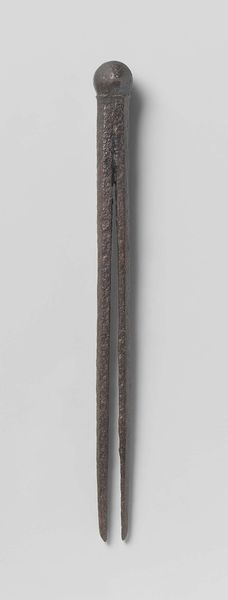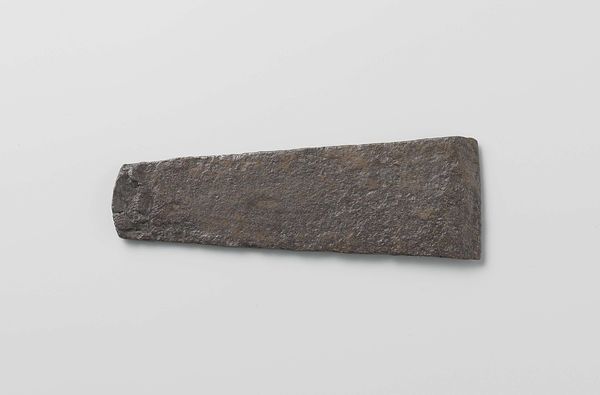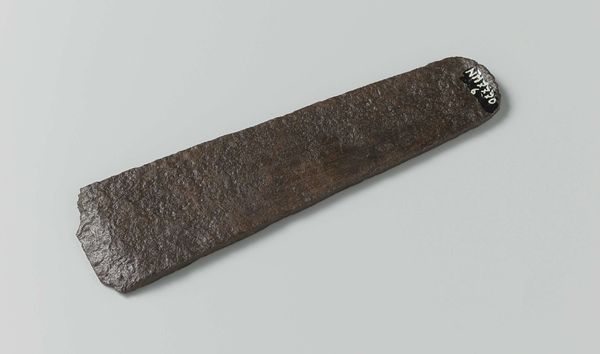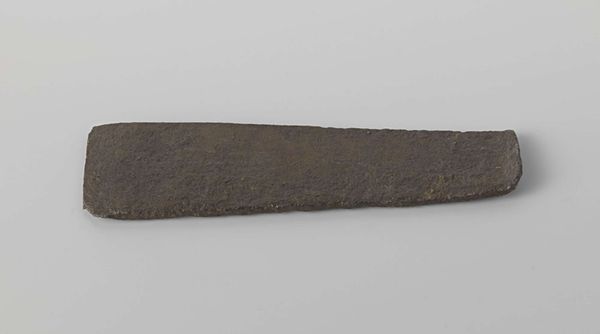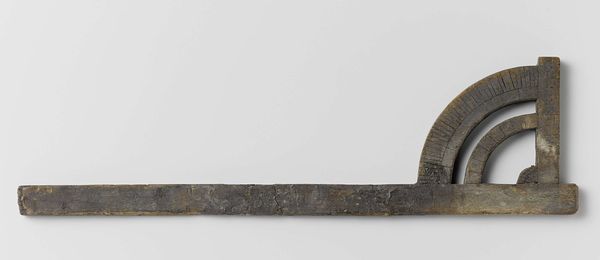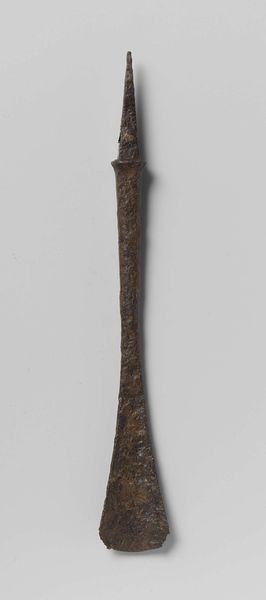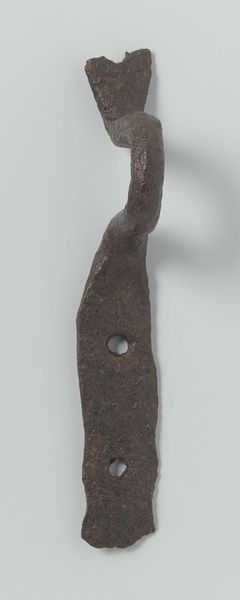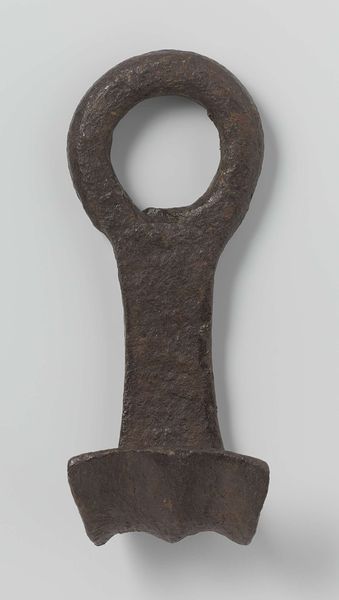
carving, tempera, metal, sculpture, wood
#
medieval
#
carving
#
tempera
#
metal
#
organic shape
#
form
#
11_renaissance
#
folk-art
#
geometric
#
sculpture
#
wood
#
regular shape
#
cut-out
#
cutout
Dimensions: length 15 cm, width 4 cm, depth 0.6 cm
Copyright: Rijks Museum: Open Domain
Editor: Here we have an intriguing object, a "Schaafbeitel met gebogen snede," or "Shave chisel with a curved blade," dating back to around 1590-1596. It is currently held at the Rijksmuseum. This anonymous piece is crafted from metal, showcasing a simple yet purposeful design. What do you see in this unassuming tool? Curator: What strikes me immediately is the sheer physicality of this object. Look at the raw texture of the metal, evidence of its forging and shaping. How many hands labored to produce it? The very process speaks to the relationship between human effort and the material world. What was the social position of those hands? Editor: So, you're focusing on the manufacturing of this chisel? Curator: Absolutely! We often overlook the labor embedded within everyday objects like this. We might also question: where did the raw materials originate? Were they locally sourced, or did they involve wider trade networks? Furthermore, what was the environmental cost of extraction and production during this period? Editor: That’s fascinating. I hadn’t considered the wider economic and social context. Curator: Indeed. And the curved blade suggests specialized labor – someone needed this particular shape for a specific purpose. How does that specialization reflect the guild structure and economic practices of the late 16th century? It forces us to consider the user as part of the art, the person using this for labour. Editor: It changes how I see it, from a static object to something representing labor, trade, and skill. Curator: Exactly. By focusing on its materials and production, we unveil layers of historical information beyond its simple form, linking high-level economies to individuals’ labour.
Comments
No comments
Be the first to comment and join the conversation on the ultimate creative platform.

